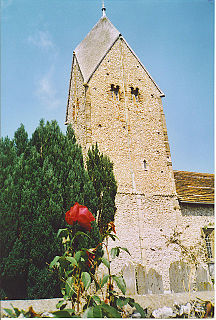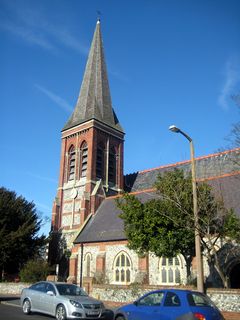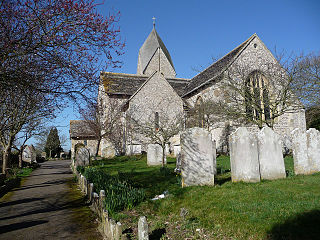Related Research Articles

West Sussex is a county in South East England on the English Channel coast. The ceremonial county comprises the shire districts of Adur, Arun, Chichester, Horsham, and Mid Sussex, and the boroughs of Crawley and Worthing. Covering an area of 1,991 square kilometres, West Sussex borders Hampshire to the west, Surrey to the north, and East Sussex to the east. The county town and only city in West Sussex is Chichester, located in the south-west of the county. This was legally formalised with the establishment of West Sussex Council in 1888 but within the ceremonial Sussex. After the reorganisation of local government in 1974, the ceremonial function of the historic county of Sussex was divided into two separate counties, with the western half becoming West Sussex and the eastern half East Sussex. The existing East and West Sussex councils took control respectively, with Mid Sussex and parts of Crawley being transferred to West Sussex administration from East Sussex. In the 2011 census, West Sussex recorded a population of 806,900.

Lancing is a large coastal village and civil parish in the Adur district of West Sussex, England, on the western edge of the Adur Valley. It occupies part of the narrow central section of the Sussex coastal plain between smaller Sompting to the west, larger Shoreham-by-Sea to the east, and the parish of Coombes to the north. Excluding definitive suburbs it may have the largest undivided village cluster in Britain. However, its economy is commonly analysed as integral to the Brighton/Worthing/Littlehampton conurbation. Its settled area beneath the South Downs National Park covers 3.65 square miles, the majority of its land.

The Adur is a river in Sussex, England; it gives its name to the Adur district of West Sussex. The river, which is 20 miles (32 km) long, was once navigable for large vessels up as far as Steyning, where there was a large Saxon port, but by the 11th century the lower river became silted up and the port moved down to the deeper waters at the mouth of the river in Shoreham-by-Sea.

Adur is a local government district of West Sussex, England. It is named after its main river and is historically part of the English county of Sussex. The council is based in Shoreham-by-Sea and the district has a population of 59,627 according to the 2001 census.

Arun is a local government district in West Sussex, England. It contains the towns of Arundel, Bognor Regis and Littlehampton, and takes its name from the River Arun, which runs through the centre of the district.

Worthing is a seaside town in West Sussex, England, at the foot of the South Downs, 10 miles (16 km) west of Brighton, and 18 miles (29 km) east of Chichester. With a population of about 110,000 and an area of 12.5 square miles (32.4 km2), the borough is the second largest component of the Brighton and Hove built-up area, the 15th most populous urban area in the United Kingdom. Since 2010, northern parts of the borough, including the Worthing Downland Estate, have formed part of the South Downs National Park. In 2019, the Art Deco Worthing Pier was named the best in Britain.

Sompting is a village and civil parish in the coastal Adur District of West Sussex, England between Lancing and Worthing. It is half grassland slopes and half developed plain at the foot of the South Downs National Park. Twentieth-century estates dovetail into those of slightly larger Lancing.
Shoreham was a parliamentary constituency centred on the town of Shoreham-by-Sea in West Sussex. It returned one Member of Parliament (MP) to the House of Commons of the Parliament of the United Kingdom from 1974 to 1997.

West Worthing is a neighbourhood of Worthing in West Sussex, England that was developed within Heene and later expanded beyond Heene's boundaries. Intended as an exclusive resort, the township of West Worthing was developed from around 1864 and merged with the formerly separate township of Worthing in 1890, when Worthing gained borough status.

Boundstone Community College was a co-educational comprehensive school for pupils aged 11 to 18, with around 1,000 pupils, including over 100 in the Sixth Form, which served the communities of Lancing and Sompting. The school closed on 31 August 2009, being replaced by the Sir Robert Woodard Academy.

Worthing Borough Council is a district council in the county of West Sussex, based in the borough of Worthing. The borough council was created in 1974 under the Local Government Act 1972 out of the existing Worthing Municipal Council, which also had borough status. It forms the lower tier of local government in Worthing, responsible for local services such as housing, planning, leisure and tourism. Since 2014 it has been a constituent council of the Greater Brighton City Region.

The Church of St Mary the Blessed Virgin, also known as St Mary the Virgin Church and St Mary's Church, is the Church of England parish church of Sompting in the Adur district of West Sussex. It stands on a rural lane north of the urban area that now surrounds the village, and retains much 11th- and 12th-century structure. Its most important architectural feature is the Saxon tower topped by a Rhenish helm, a four-sided pyramid-style gabled cap that is uncommon in England. English Heritage lists the church at Grade I for its architecture and history.

Sompting & North Lancing is an electoral division of West Sussex in the United Kingdom, and returns one member to sit on the West Sussex County Council.

St James the Less Church is the Anglican parish church of Lancing, an ancient village which has been absorbed into the modern town of Lancing in the district of Adur, one of seven local government districts in the English county of West Sussex. It was founded in the 12th century in the most northerly of the three settlements in Lancing parish, which has Saxon origins. The present building is mostly 13th-century in appearance, and structural work has been carried out several times since—particularly in the 18th and 19th centuries, when the church was restored from a ruinous condition. English Heritage has listed the church at Grade I for its architectural and historical importance.
The district of Adur, one of seven local government districts in the English county of West Sussex, has 119 buildings with listed status. The urbanised southern part of the district forms part of the Brighton/Worthing/Littlehampton conurbation, and most listed structures are in the three main centres of population: Southwick, Shoreham-by-Sea and Lancing. The towns have grown residentially and industrially in the 20th century, but all three have ancient origins as villages and manors on the banks of the River Adur and the English Channel coast. The rest of Adur district's territory is remote downland countryside with scattered farms and hamlets; some of their buildings also have listed status.
The history of local government in Sussex is unique and complex. Founded as a kingdom in the 5th century, Sussex was annexed by the kingdom of Wessex in the 9th century, which after further developments became the Kingdom of England. It currently corresponds to two counties, East Sussex and West Sussex.

Sompting Abbotts Preparatory School is a historic West Sussex independent school in Sompting, near Worthing and Steyning. It educates children of both sexes aged 2 to 13. The school sits in parkland of 30 acres, which includes woodland, chalk grassland slopes and a pond.
References
- 1 2 "Records of East Preston Union". The National Archives . Retrieved 12 February 2020.
- ↑ "Worthing RD: Relationships unit history of Worthing RD". A Vision of Britain. University of Portsmouth. Retrieved 20 January 2010.
- ↑ "Worthing RD: Relationships unit history of Worthing RD". A Vision of Britain. University of Portsmouth. Retrieved 20 January 2010.
- ↑ "Worthing RD: Relationships unit history of Worthing RD". A Vision of Britain. University of Portsmouth. Retrieved 20 January 2010.
Coordinates: 50°51′07″N0°28′50″W / 50.85191°N 0.48065°W